Voyager 1 Approaching Jupiter In 1979. [Reddit/spacegifs]
![Voyager 1 Approaching Jupiter In 1979. [Reddit/spacegifs]](https://64.media.tumblr.com/57003d3715c75582218ee1b20aeb6a70/tumblr_p21webfuy81s04h2ho1_400.gif)
Voyager 1 approaching Jupiter in 1979. [Reddit/spacegifs]
More Posts from Jovian-witch and Others

Jupiter is considered to be a planet of luck, representing wealth of both knowledge and of monetary value, skills and talent development, courage, confidence, duty, and success, as well as self-improvement and developing one’s own individuality.
This spread is to shed light on how Jupiter can help you:
An aspect of yours that Jupiter asks you to focus on
How to remove or overcome any barriers that may get in the way of you expressing or developing this aspect
How you can share this trait with others/How this may help others and yourself
How you can develop this aspect/How Jupiter can help you harmonize with this aspect


Jupiter's Moon IO: Jupiter's fifth moon, Io, is the most volcanically active body in the solar system. Io's surface temperature averages about minus 202 degrees Fahrenheit (minus 130 Celsius), resulting in the formation of sulfur dioxide snowfields. But Io's volcanoes can reach 3,000 F (1,649 C). Io is often referred to as a celestial body of fire and ice. (source)
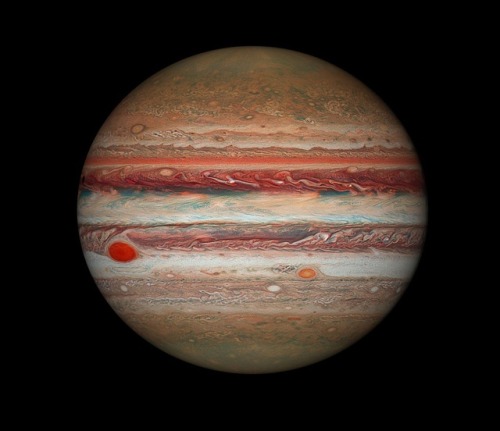
Hubble’s Jupiter and the Shrinking Great Red Spot
Image Credit: NASA, ESA, Hubble, OPAL Program, STScI; Processing: Karol Masztalerz
Solar System 10 Things: Two Years of Juno at Jupiter
Our Juno mission arrived at the King of Planets in July 2016. The intrepid robotic explorer has been revealing Jupiter’s secrets ever since.
Here are 10 historic Juno mission highlights:

1. Arrival at a Colossus
After an odyssey of almost five years and 1.7 billion miles (2.7 billion kilometers), our Juno spacecraft fired its main engine to enter orbit around Jupiter on July 4, 2016. Juno, with its suite of nine science instruments, was the first spacecraft to orbit the giant planet since the Galileo mission in the 1990s. It would be the first mission to make repeated excursions close to the cloud tops, deep inside the planet’s powerful radiation belts.

2. Science, Meet Art
Juno carries a color camera called JunoCam. In a remarkable first for a deep space mission, the Juno team reached out to the general public not only to help plan which pictures JunoCam would take, but also to process and enhance the resulting visual data. The results include some of the most beautiful images in the history of space exploration.

3. A Whole New Jupiter
It didn’t take long for Juno—and the science teams who hungrily consumed the data it sent home—to turn theories about how Jupiter works inside out. Among the early findings: Jupiter’s poles are covered in Earth-sized swirling storms that are densely clustered and rubbing together. Jupiter’s iconic belts and zones were surprising, with the belt near the equator penetrating far beneath the clouds, and the belts and zones at other latitudes seeming to evolve to other structures below the surface.
4. The Ultimate Classroom
The Goldstone Apple Valley Radio Telescope (GAVRT) project, a collaboration among NASA, JPL and the Lewis Center for Educational Research, lets students do real science with a large radio telescope. GAVRT data includes Jupiter observations relevant to Juno, and Juno scientists collaborate with the students and their teachers.
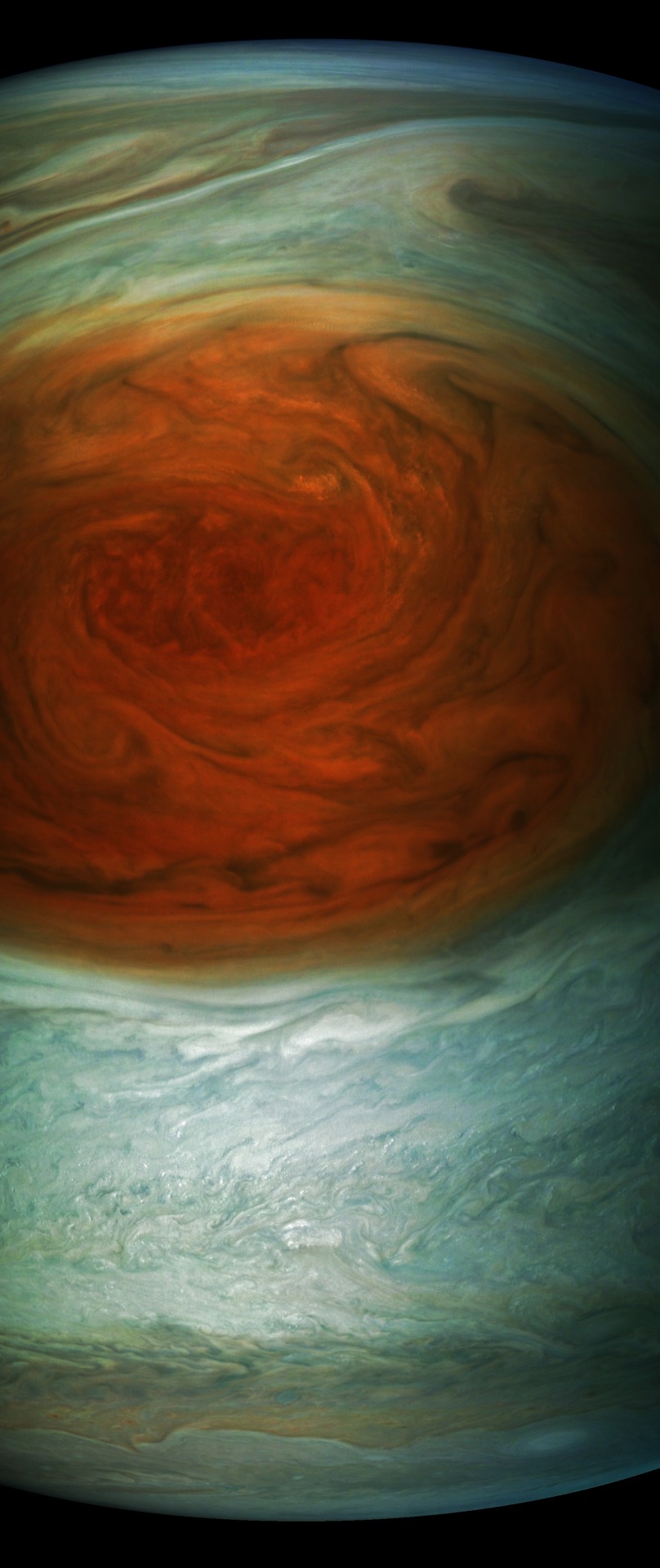
5. Spotting the Spot
Measuring in at 10,159 miles (16,350 kilometers) in width (as of April 3, 2017) Jupiter’s Great Red Spot is 1.3 times as wide as Earth. The storm has been monitored since 1830 and has possibly existed for more than 350 years. In modern times, the Great Red Spot has appeared to be shrinking. In July 2017, Juno passed directly over the spot, and JunoCam images revealed a tangle of dark, veinous clouds weaving their way through a massive crimson oval.
“For hundreds of years scientists have been observing, wondering and theorizing about Jupiter’s Great Red Spot,” said Scott Bolton, Juno principal investigator from the Southwest Research Institute in San Antonio. “Now we have the best pictures ever of this iconic storm. It will take us some time to analyze all the data from not only JunoCam, but Juno’s eight science instruments, to shed some new light on the past, present and future of the Great Red Spot.”

6. Beauty Runs Deep
Data collected by the Juno spacecraft during its first pass over Jupiter’s Great Red Spot in July 2017 indicate that this iconic feature penetrates well below the clouds. The solar system’s most famous storm appears to have roots that penetrate about 200 miles (300 kilometers) into the planet’s atmosphere.

7. Powerful Auroras, Powerful Mysteries
Scientists on the Juno mission observed massive amounts of energy swirling over Jupiter’s polar regions that contribute to the giant planet’s powerful auroras – only not in ways the researchers expected. Examining data collected by the ultraviolet spectrograph and energetic-particle detector instruments aboard Juno, scientists observed signatures of powerful electric potentials, aligned with Jupiter’s magnetic field, that accelerate electrons toward the Jovian atmosphere at energies up to 400,000 electron volts. This is 10 to 30 times higher than the largest such auroral potentials observed at Earth.
Jupiter has the most powerful auroras in the solar system, so the team was not surprised that electric potentials play a role in their generation. What puzzled the researchers is that despite the magnitudes of these potentials at Jupiter, they are observed only sometimes and are not the source of the most intense auroras, as they are at Earth.
8. Heat from Within
Juno scientists shared a 3D infrared movie depicting densely packed cyclones and anticyclones that permeate the planet’s polar regions, and the first detailed view of a dynamo, or engine, powering the magnetic field for any planet beyond Earth (video above). Juno mission scientists took data collected by the spacecraft’s Jovian InfraRed Auroral Mapper (JIRAM) instrument and generated a 3D fly-around of the Jovian world’s north pole.
Imaging in the infrared part of the spectrum, JIRAM captures light emerging from deep inside Jupiter equally well, night or day. The instrument probes the weather layer down to 30 to 45 miles (50 to 70 kilometers) below Jupiter’s cloud tops.

9. A Highly Charged Atmosphere
Powerful bolts of lightning light up Jupiter’s clouds. In some ways its lightning is just like what we’re used to on Earth. In other ways,it’s very different. For example, most of Earth’s lightning strikes near the equator; on Jupiter, it’s mostly around the poles.

10. Extra Innings
In June, we approved an update to Juno’s science operations until July 2021. This provides for an additional 41 months in orbit around. Juno is in 53-day orbits rather than 14-day orbits as initially planned because of a concern about valves on the spacecraft’s fuel system. This longer orbit means that it will take more time to collect the needed science data, but an independent panel of experts confirmed that Juno is on track to achieve its science objectives and is already returning spectacular results. The spacecraft and all its instruments are healthy and operating nominally.
Read the full web version of this week’s ‘Solar System: 10 Things to Know’ article HERE.
For regular updates, follow NASA Solar System on Twitter and Facebook.
Make sure to follow us on Tumblr for your regular dose of space: http://nasa.tumblr.com
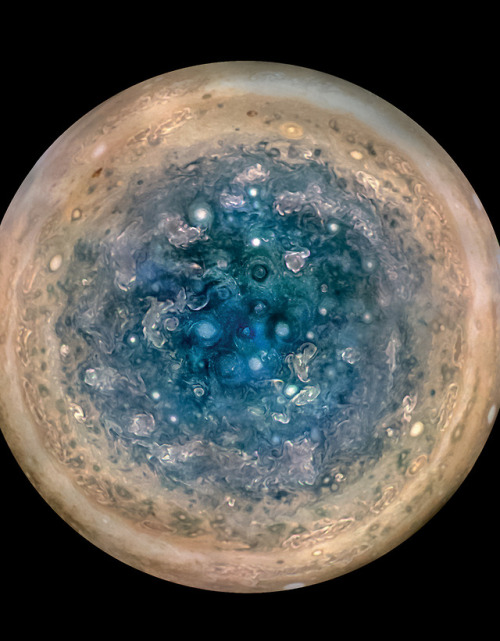
This image shows an enhanced colour, daytime and stereographic image of Jupiter’s south pole.
It was imaged by NASA’s Juno spacecraft from an altitude of 32,000 miles (52,000 kilometers). The oval features are cyclones, up to 600 miles (1,000 kilometers) in diameter.

llustration from the great jupiter storm
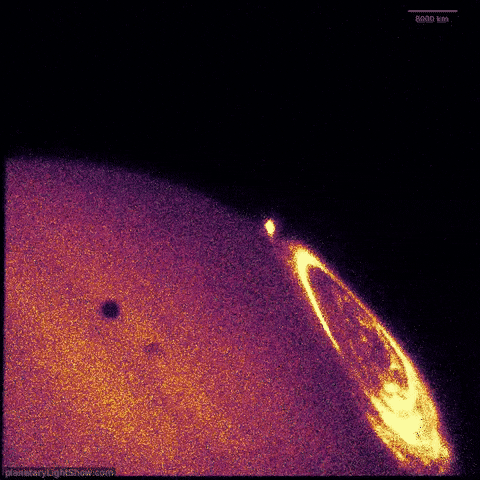
This ultraviolet Hubble movie shows the ring aurora on Jupiter and the silhouette and shadow of its moon Europa. You can also see the magnetic footprint of Io, just ahead of the aurora.



Io as seen by the Voyager 1 spacecraft on March 4, 1979 | A triple eclipse on Jupiter: Moons Io, Ganymede & Callisto cast shadows on the planet simultaneously, by NASA, 2004 | Callisto.




Jupiter
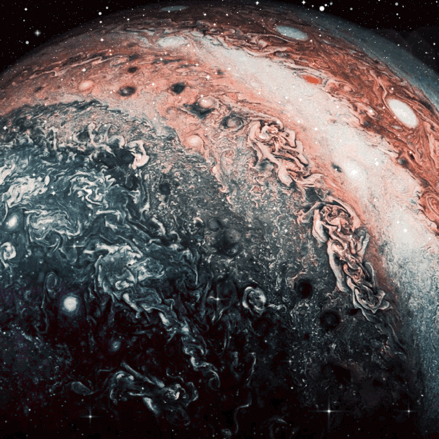



Jupiter ✨ gifs made by me :)
-
 daieuxetdailleurs liked this · 1 year ago
daieuxetdailleurs liked this · 1 year ago -
 lingerbull liked this · 1 year ago
lingerbull liked this · 1 year ago -
 unlimited1 reblogged this · 1 year ago
unlimited1 reblogged this · 1 year ago -
 unlimited1 liked this · 1 year ago
unlimited1 liked this · 1 year ago -
 40men2nd liked this · 1 year ago
40men2nd liked this · 1 year ago -
 persian99 liked this · 1 year ago
persian99 liked this · 1 year ago -
 goldenshaun liked this · 1 year ago
goldenshaun liked this · 1 year ago -
 nikita-negodniy liked this · 1 year ago
nikita-negodniy liked this · 1 year ago -
 raffinha2 liked this · 1 year ago
raffinha2 liked this · 1 year ago -
 singlemalt2 liked this · 1 year ago
singlemalt2 liked this · 1 year ago -
 hairlover-nbg liked this · 1 year ago
hairlover-nbg liked this · 1 year ago -
 vasco96 reblogged this · 1 year ago
vasco96 reblogged this · 1 year ago -
 vasco96 liked this · 1 year ago
vasco96 liked this · 1 year ago -
 jlex1972 liked this · 1 year ago
jlex1972 liked this · 1 year ago -
 pothos-god-of-desire reblogged this · 1 year ago
pothos-god-of-desire reblogged this · 1 year ago -
 plantpete liked this · 1 year ago
plantpete liked this · 1 year ago -
 bigpackhouse reblogged this · 1 year ago
bigpackhouse reblogged this · 1 year ago -
 acivilzedhuman reblogged this · 1 year ago
acivilzedhuman reblogged this · 1 year ago -
 higo2l liked this · 1 year ago
higo2l liked this · 1 year ago -
 pothos-god-of-desire liked this · 1 year ago
pothos-god-of-desire liked this · 1 year ago -
 mriya2000 liked this · 1 year ago
mriya2000 liked this · 1 year ago -
 glacialdrip reblogged this · 1 year ago
glacialdrip reblogged this · 1 year ago -
 fibonacciiii reblogged this · 2 years ago
fibonacciiii reblogged this · 2 years ago -
 luzshne liked this · 2 years ago
luzshne liked this · 2 years ago -
 k-u-z-u reblogged this · 2 years ago
k-u-z-u reblogged this · 2 years ago -
 k-u-z-u liked this · 2 years ago
k-u-z-u liked this · 2 years ago -
 yukkiiv liked this · 2 years ago
yukkiiv liked this · 2 years ago -
 rrakuzan reblogged this · 2 years ago
rrakuzan reblogged this · 2 years ago -
 cosmicallyfried liked this · 2 years ago
cosmicallyfried liked this · 2 years ago -
 camdennightingale reblogged this · 2 years ago
camdennightingale reblogged this · 2 years ago -
 camdennightingale liked this · 2 years ago
camdennightingale liked this · 2 years ago -
 strugglingqueer liked this · 2 years ago
strugglingqueer liked this · 2 years ago -
 poesy-like-stuff liked this · 2 years ago
poesy-like-stuff liked this · 2 years ago -
 sylphidcs liked this · 2 years ago
sylphidcs liked this · 2 years ago -
 waterylilys reblogged this · 2 years ago
waterylilys reblogged this · 2 years ago -
 dqwren liked this · 2 years ago
dqwren liked this · 2 years ago -
 aefensteorras liked this · 2 years ago
aefensteorras liked this · 2 years ago -
 tophbefong reblogged this · 2 years ago
tophbefong reblogged this · 2 years ago -
 parmoonlight liked this · 2 years ago
parmoonlight liked this · 2 years ago -
 imhuntingdeanwinchesterr liked this · 2 years ago
imhuntingdeanwinchesterr liked this · 2 years ago

blog dedicated to my work with the planet Jupiter
96 posts